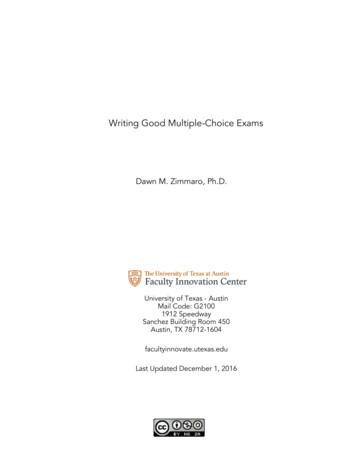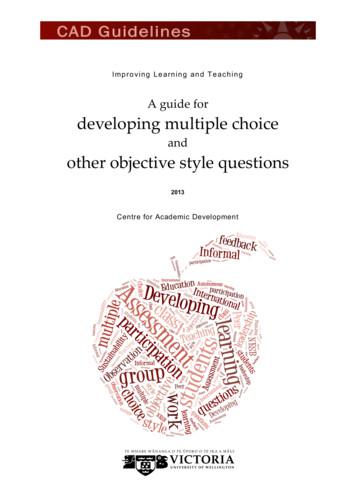MACROMOLECULES PRACTICE TEST MULTIPLE CHOICE
Name Date PeriodBiology I, Ms. DesfosséMACROMOLECULES PRACTICE TEST MULTIPLE CHOICE1. The molecule below is aa.b.c.d.e.carbohydratelipidsteroidA and CB and C2. The molecule below is a polymer of glucose monomers. The molecule below isa.b.c.d.e.CelluloseStarchMaltoseGlycogenChitin3. You are walking down the “tough streets” of New Jersey, and suddenly you feel the need to runaway from someone who is accosting you! Your muscles keep a form of energy stored just forthese emergencies. What macromolecule stores energy in the muscles?a. Glucoseb. Galactosec. Starchd. Glycogene. Chitin
4. gives rigidity to the cell membrane.a.b.c.d.e.A triglycerideA PhospholipidWaxCholesterolCellulose5. The molecule below is a.b.c.d.e.a saturated fatty acida saturated triglyceridean unsaturated fatty acidan unsaturated triglyceridean unsaturated wax6. Table sugar 7. A disaccharide is formed when two monosaccharides are joined together bya.b.c.d.e.a synthesis reactiona hydrolytic reactiona hydrolysis reactionA and BB and C8. The main source of energy for cells isa.b.c.d.e.SucroseGlucoseFructoseGalactoseMaltose
9. Mr. Jolly has just been to his doctor to discuss the results of his recent physical. His doctor toldhim that his blood “bad” triglycerides and cholesterol are too high and that he is beginning todevelop heart disease. Since he has not completely developed heart disease, there is still timefor Mr. Jolly to change his diet and lifestyle so that he does not develop heart disease. Given hisnew health news, what would be the best dinner for Mr. Jolly to eat tonight?a. Steak, potatoes, veggies, water and chocolate cakeb. A cheeseburger, French fries, and chocolate ice cream sundaec. Pizza and donutsd. Whole wheat pasta tossed in olive oil with veggies and tofue. Whole wheat pasta in a butter cream sauce with veggies and tofu10.Mr. Jolly had put himself at risk for heart disease due to his previous eating habits.Which of the following most likely describes the eating habits that led to Mr. Jolly’s high risk ofheart disease?a. A diet with many saturated triglycerides and animal derived foods.b. A diet with many unsaturated triglycerides and plant derived foods.c. A diet with many complex carbs and plant derived foods.d. A diet with many simple carbs and plant derived foods.11.a.b.c.d.e.Potatoes have a large amount ofCelluloseGlycogenTriglycerideWaxStarch12.Lard is pig fat. People often use it is making pastries because its solid form at roomtemperature makes it ideal for flaky pastries and pie crusts. Lard is a(n) a. Unsaturated triglycerideb. Saturated triglyceridec. Waxd. Unsaturated fatty acide. Steroid13.During photosynthesis, plants capture sunlight energy to make glucose. Then they are ableto store that glucose energy as what macromolecule?a. Starchb. Cellulosec. Chitind. Sucrosee. Glycogen
14.Which food below, when consumed in excess over time, would be most likely to cause heartdisease?a. Oatmealb. Peanut butterc. Butterd. Sugar canee. Celery15.A plant living in a dry area will likely have a substance that helps to minimize water lossfrom the leaves. What is that substance?a. Waxb. Triglyceridec. Lipidd. Cuticlee. A, C, and D16.If you have consistent issues with bowel constipation, which of the following should youincrease in your diet?a. Celluloseb. Chitinc. Phospholipidd. Starche. Glycogen17.The image below shows a build-up of plaque on the inside of an artery wall. Which of thefollowing dietary macromolecules is most likely the cause of this type of plaque build-up?a. Unsaturated phospholipidb. Saturated phospholipidc. Saturated triglycerided. Unsaturated triglyceridee. Ear Wax
18.The macromolecules depicted in the image below make up a wall that surrounds the outsideof all cells. What type of macromolecule is pictured holipidsStarchesa.b.c.d.e.Which of the following is for LONG TERM energy storage in both plants and 0.The molecule below is a(n) and is most likely to beat room temperature.a.b.c.d.e.Unsaturated fat/ solidSaturated fat/ solidUnsaturated fat/ liquidSaturated fat/ liquidEar wax/ solid
21.The macromolecule below, which consists of chains of glucose stacked on top of oneanother, is called 22.a.b.c.d.e.Dietary fiberChitinCelluloseA and BA and Ca.b.c.d.e.A LIPID molecule that transmits messages around an organism’s body is most likely A triglycerideA waxA steroidA phospholipidA cuticle23.The information macromolecule that STORES information about how to run the cell iscalled a. Chitinb. Cellulosec. DNAd. RNAe. Nucleus24.a.b.c.d.e.Proteins are made up of chains ofMonosaccharidesNucleotidesAmino acidsFatty acidsSteroids
25.26.27.28.29.a.b.c.d.e.How many different amino acids are there?11020hundredsmillionsa.b.c.d.e.A change in pH is able to cause protein denaturation becauseThe amino group is sensitive to OHThe molecules start moving so rapidly that they come apartSasha said so and all the world believes him.It causes the areas that were hydrophobic to become hydrophilicThe primary structure changes when the [H ] changesa.b.c.d.e.Amino acids are linked together via what type of bond?Hydrogen bondPolar bondPeptide bondSynthetic bondHydrolytic bonda.b.c.d.e.What type of reaction links monomers together to form rgonica.b.c.d.e.Which of the following is NOT an organic compound?C6H12O6H2OCH4C2H4O2All of the above are organic compounds30.Which of the following represents the correct ranking of terms from smallest to largest?a.b.c.d.e.Macromolecule polymer monomer carbon atomPolymer monomer macromolecule carbon atomCarbon atom macromolecule polymer monomerMonomer carbon atom macromolecule polymerCarbon atom monomer polymer macromolecule
Use the information below to answer the following multiple choice questions.You are a scientist at a prestigious university. You are studying the effects of various temperatures onthe function of a particular fictitious cellular protein, “toxeliminator.” The function of the protein inthe cell is to break apart and eliminate toxins that invade the cell.The following chart depicts your experimental set-up.Test TubeATest Tube temperatures ºCNormal cell temp (35º)B55 ºC75 ºD95 ºContents of the test tube2 ml toxin2 ml toxeliminator protein2 ml toxin2 ml toxeliminator protein2 ml toxin2 ml toxeliminator protein2 ml toxin2 ml toxeliminator proteinFor your data, you measure the amount of toxin still left in each test tube 10 minutes after you havemixed the test tube ingredients. You have written down your results, but you have been a sloppyscientist! You mixed up the tubes and now you don’t know which measurement goes with which tube!!The following is your data.Amount of toxin left in the tube (mL)0.11.31.82.031.Which piece of data most likely corresponds to tube D?a. 0.1b. 1.3c. 1.8d. 2.0e. None of the data would correspond with tube D32.Which piece of data most likely corresponds with tube A?0.11.31.82.0None of the data would correspond with tube Aa.b.c.d.e.
Name_ Date_ Period_ Biology I, Ms. Desfossé MACROMOLECULES PRACTICE TEST MULTIPLE CHOICE 1. The molecule below is a a. carbohydrate b. lipid c. steroid d. A and C e. B and C 2. The molecule below is a polymer of glucose monomers. The molecule below is a. Cellulose b. Starch c. Maltose d. Glycogen e. Chitin 3.
50 multiple choice. 5. field test 40 multiple choice field test 46 ITEMS/40 POINTS 45 ITEMS/40 POINTS 55 ITEMS/50 POINTS 45 ITEMS/40 POINTS. 12 Students compose two essays one, for each of. two writing prompts. 40. multiple choice. 5. field test. 49. multiple choice. 1. open ended. 6. field test 50 multiple choice. 5. field test 40 multiple .
Test Blueprint 10 Preparing to Write Items 11 Description of Multiple-Choice Items 12-15 Multiple-Choice Item Writing Guidelines 16-18 Guidelines to Writing Test Items 19 Sample Multiple-Choice Items Related to Bloom’s Taxonomy 21-23 More Sample Multiple-Choice Items 24-25 Levels of Performance and Sample Prototype Items 26 Good versus Poor Multiple-Choice Items 27-28 Activity: Identifying .
Developing multiple choice and other objective style questions 4 2. Writing multiple choice questions THE FORMAT of a multiple choice question Multiple choice questions are the most commonly used format for presenting objective-style questions. A multiple choice question consists of two parts ñ A stem and several options or alternatives.
LAB 4 – Macromolecules Overview In addition to water and minerals, living things contain a variety of organic molecules. Most of the organic molecules in living organisms are of 4 basic types: carbohydrate, protein, lipid and nucleic acid. Many of these molecules are long polymers, and thus collectively referred to as macromolecules.In this
10/4/2015 1 1 Macromolecules 2 Organic Compounds Compounds that contain CARBON are called organic. Macromolecules are large organic molecules. 3 Carbon (C) Carbon has 4 electrons in outer shell. Carbon can form covalent bonds with as many as 4 other atoms (elements). Usually with C, H, O or N. Example: CH 4
Macromolecules Graphic Organizer Directions: There are 4 classes of macromolecules: carbohydrates, proteins, lipids and nucleic acids. Each macromolecule has its own unique characteristics and each is also necessary for the survival of living things. Fill in the missing information below to .
1.Define macromolecules 2.Describe how polymers are assembled from monomers and how polymers can be disassembled back to monomers 3.Identify the four major classes of biological macromolecules . Pep
2.1 ASTM Standards:2 C186 Test Method for Heat of Hydration of Hydraulic Cement C1679 Practice for Measuring Hydration Kinetics of Hy-draulic Cementitious Mixtures Using Isothermal Calorim-etry E691 Practice for Conducting an Interlaboratory Study to Determine the Precision of a Test Method 3. Terminology 3.1 Definitions of Terms Specific to This Standard: 3.1.1 baseline, n—the time-series .























